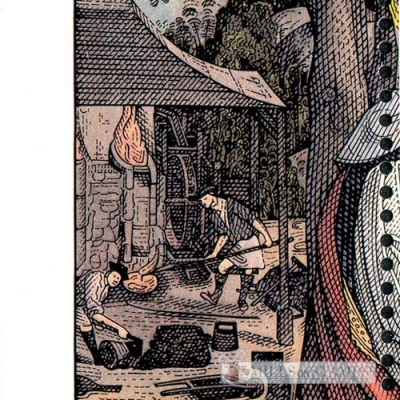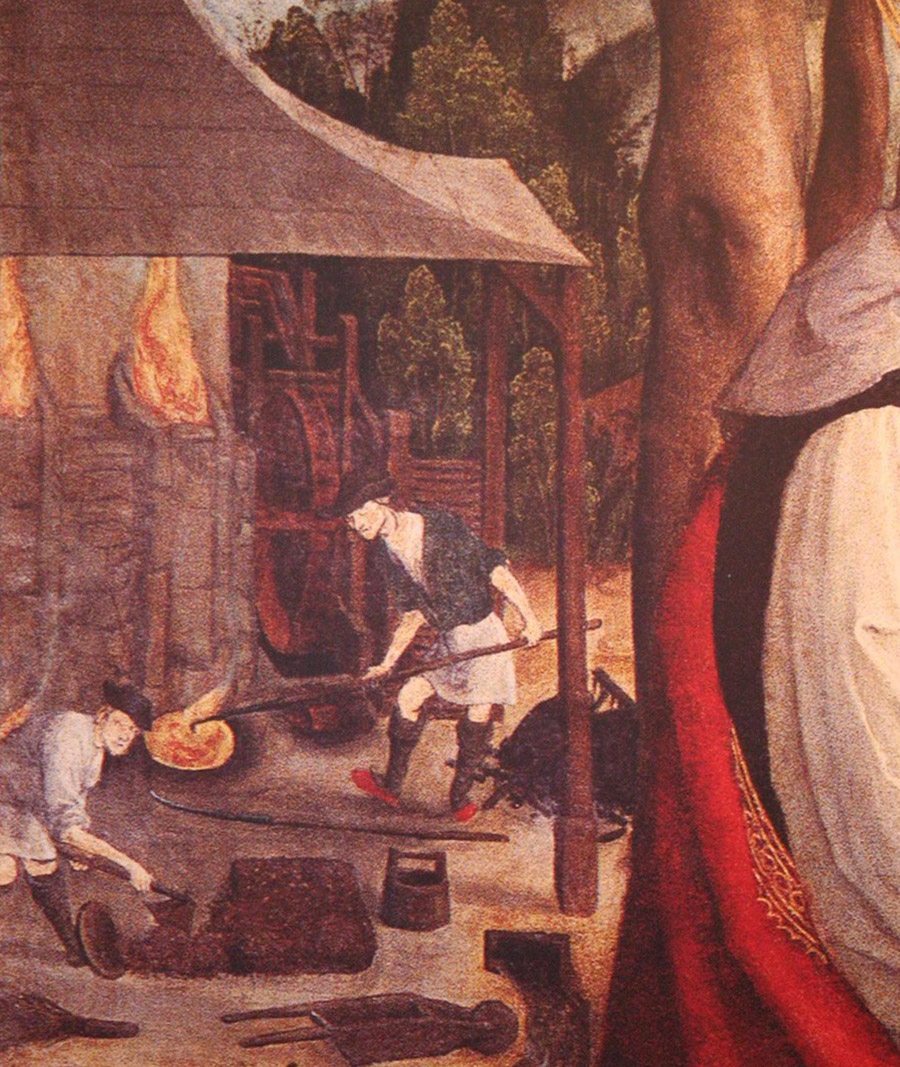-
2012-ss-logo.jpg)

Perforation: Harrow
Subject:
1,6 euro. Reproduction of Mettercia* from Rožňava**
Additional:
*Mettercia - Anna selbdritt, The Virgin and Child with St. Anne - is a subject in Christian art, showing Saint Anne with her daughter, the Virgin Mary, and her grandson Jesus. This type has been quite popular in Germany from the 14th century.
The painting of Anna Selbdritt from Rožňava (1513), in literature also known under the name of Metercia from Rožňava, is one of the most famous works of art of the late Gothic period in Slovakia. While the circuit the artist drew the inspiration from remains a subject of discussion, there is little doubt of the panel environment, in which it is located up to now. The group of St. Anne with her daughter Virgin Mary and a grandchild – Jesus – among them belonged to the most common themes of paintings in Spiš as well as in Eastern Slovakia (Levoča, Ľubica, Spišská Sobota, Strážky, Prešov, etc.) around 1500. The boom of this iconography was connected with the theological idea of the Immaculate Conception of the Virgin Mary and the paintings ordered by religious brotherhoods of St. Anne promoted this idea. Metercia from Rožňava is different from most other similar paintings, showing the landscape scenes with images of mining life.
And so on this panel one can see a man, on the threshold of modern times, and his images of mechanisms necessary for mining of ores and precious metals, including pulleys, wagons and some works such as ore conveying, smelting (see at the fragment with 2 workers at the melting house) and so on. The whole scene is overseen from the middle of the clouds by the half-figure of God the Father, while there are a few angels behind St. Anne climbing the tree on the left. This theme probably comes from the Old Testament, which speaks of wealth that “one cannot search for in a treetop, but in its roots” (Daniel 4). The panel painting of Rožňava integrates several meanings: Saint Anne is the patron saint of miners, who had their work illustrated in scenes behind the central group. From this perspective, it represents an immediate bond with the local environment. The tree on the left is moralistic-religious imagery and parallel to the work of miners mining precious metals. Finally – a promising landscape behind the central group represents one of the earliest attempts to illustrate the cultural landscape in our painting art – the natural environment inhabited and used by man.

**Rožňava is the biggest and the most important town of Northern Gemer and since 1776 has been the seat of Rožňava Bishopric. Originally, it was also an important mining town with widespread privileges. The town’s centre is a wide square shaped square with interesting buildings from the last centuries. There are also some interesting churches in the town. Bishop's Cathedral, originally a parish church, is a monumental Gothic construction with beautiful vaults and Baroque furnishing. From the old furnishing the most valuable is the table painting from 1513 which introduces St. Anna Samotretia (known as Metercia of Rožňava). The background of the picture shows all kinds of mining works from the survey of mining field to the transporting of ore. There is even a stone pastofory dating back to 1507. Next to the parish church is the Classicist building of the town hospital. In the line of the houses on the main square are the Franciscan monastery and also a beautifulchurch with Baroque furnishing.
The Town Tower is in the middle of the main square as the remnant of the original Town Hall. Next to it the former Jesuit church, which dates back to the middle of the 17th century, is interesting because of the fact that it had to be built by the Protestants to please the Jesuits. The other dominant feature of the square is the monument of St. Františka Andrássy which was removed from the square for a long time in the past. Today’s town hall is seated in a building from the year 1711. The Baroque-Classicist Episcopial Residence dates back to the end of the 18th century and in front of it stands a Baroque pestilential column. The Protestant Church from the 18th century is out of the square as well as the Secessionist Church and the meeting-place of the Reformed Church from the years 1904–1905. The remarkable Mining Museum of the town can be found in a Secessionist building from the year 1910 and the visitors can see expositions from the fields of geology, natural history, mining and metallurgy. South to the town is Silicka Planina which is the part of the Slovak Karst National Park. Northern tourist paths are leading to areas of Volovské Hills and its main ridge.
__________
This information has been taken from VisitSlovakia page and on web page of Post of Slovakia
Size (of sheet, booklet) mm: 100x140
Art on stamps
Slovakia 2011.12.13
In issue: Souvenir sheet(s): 1
Printing: Recess printing from flat plate combined with offset